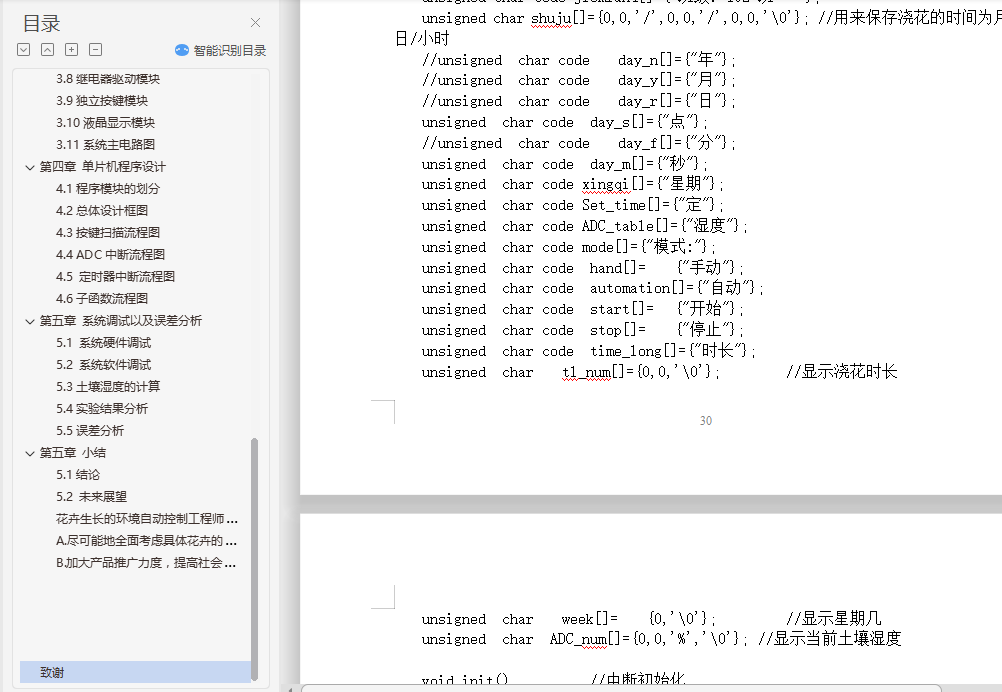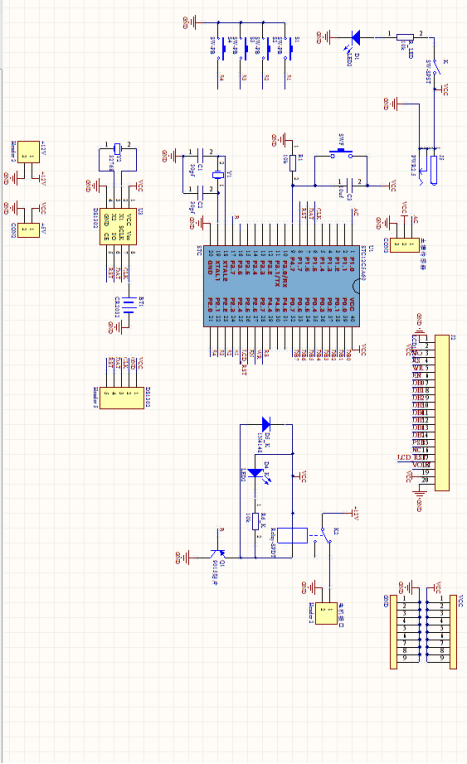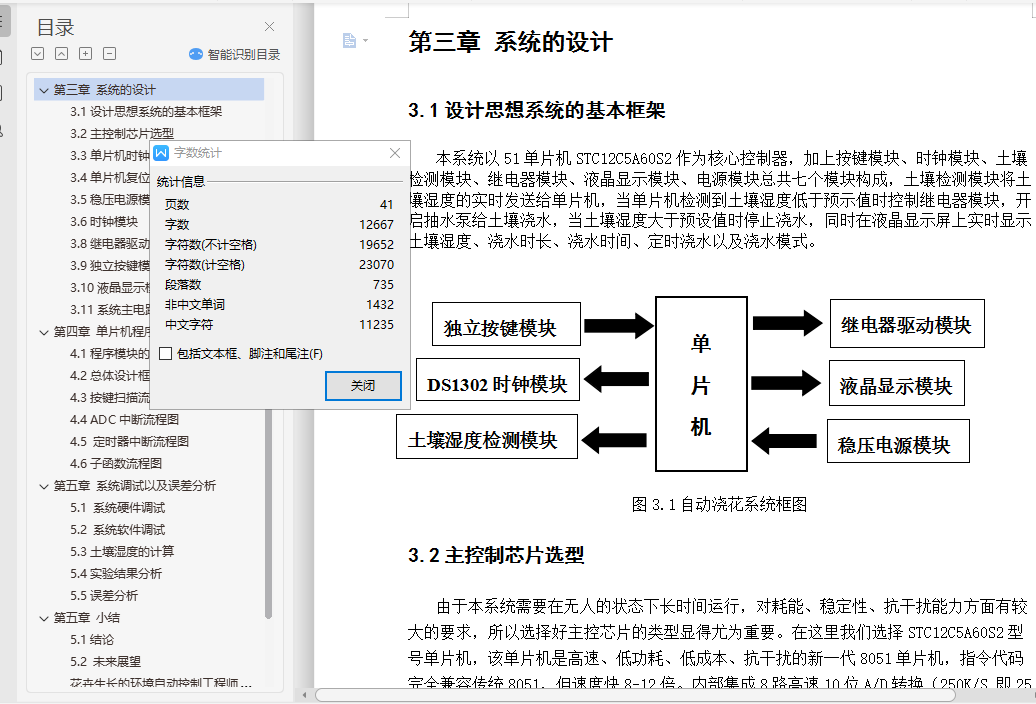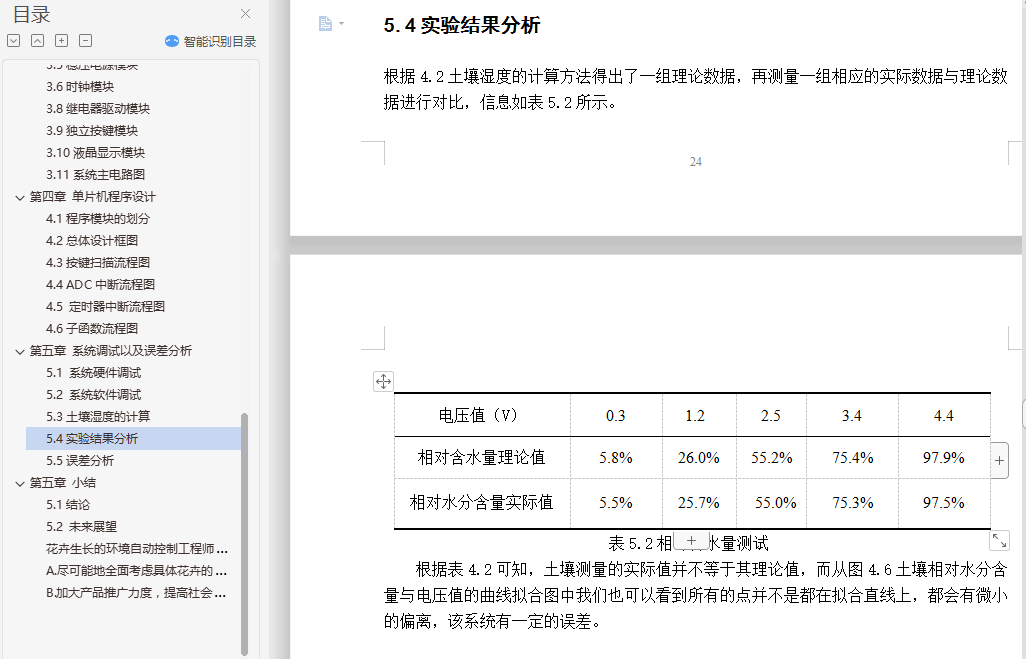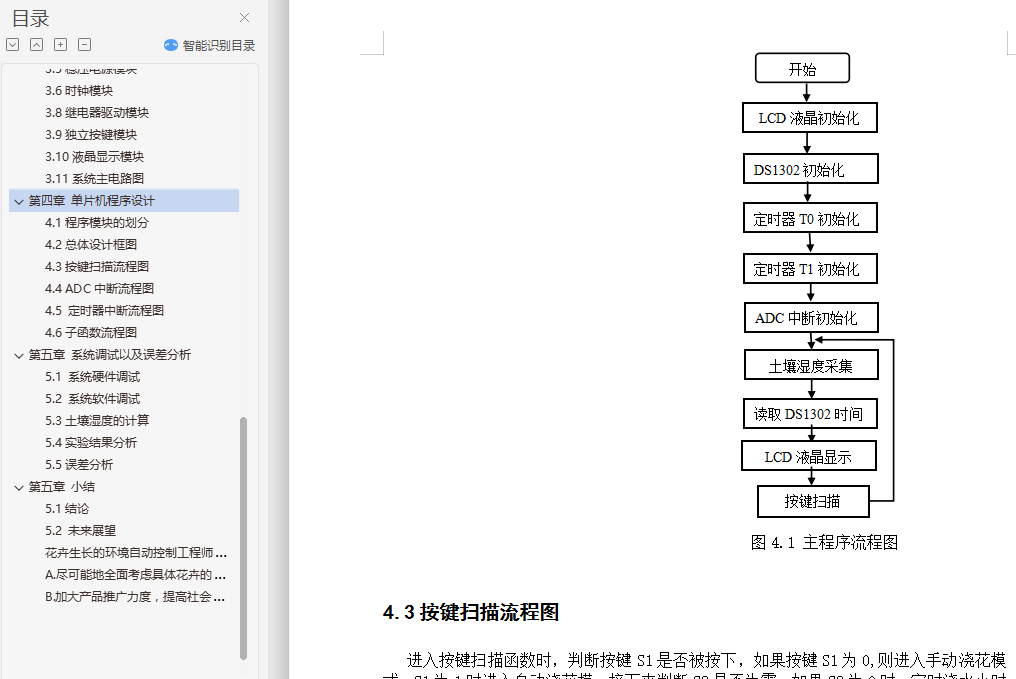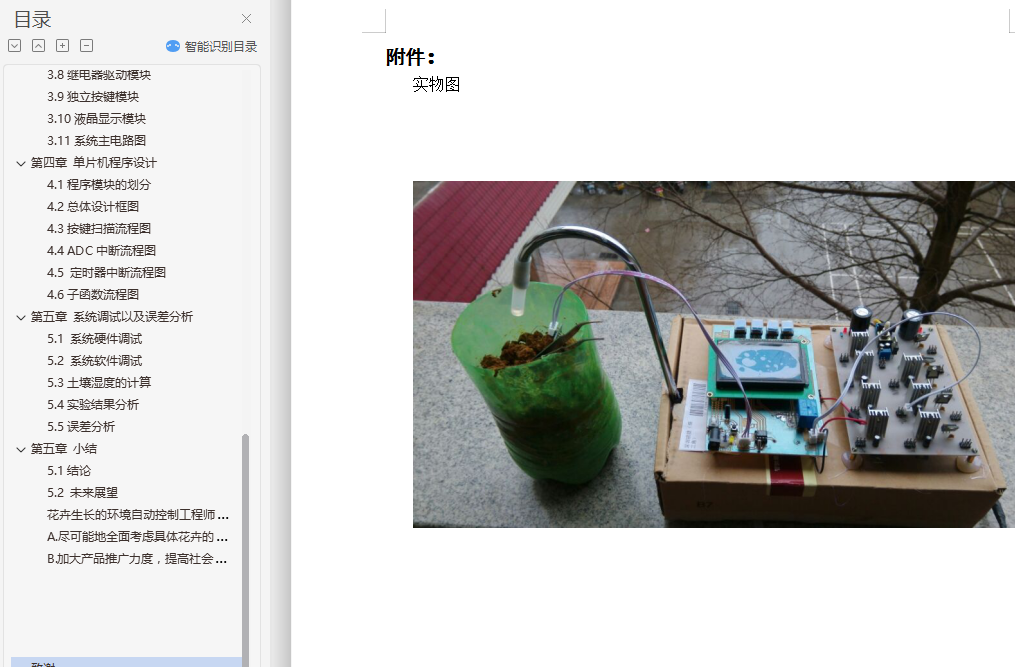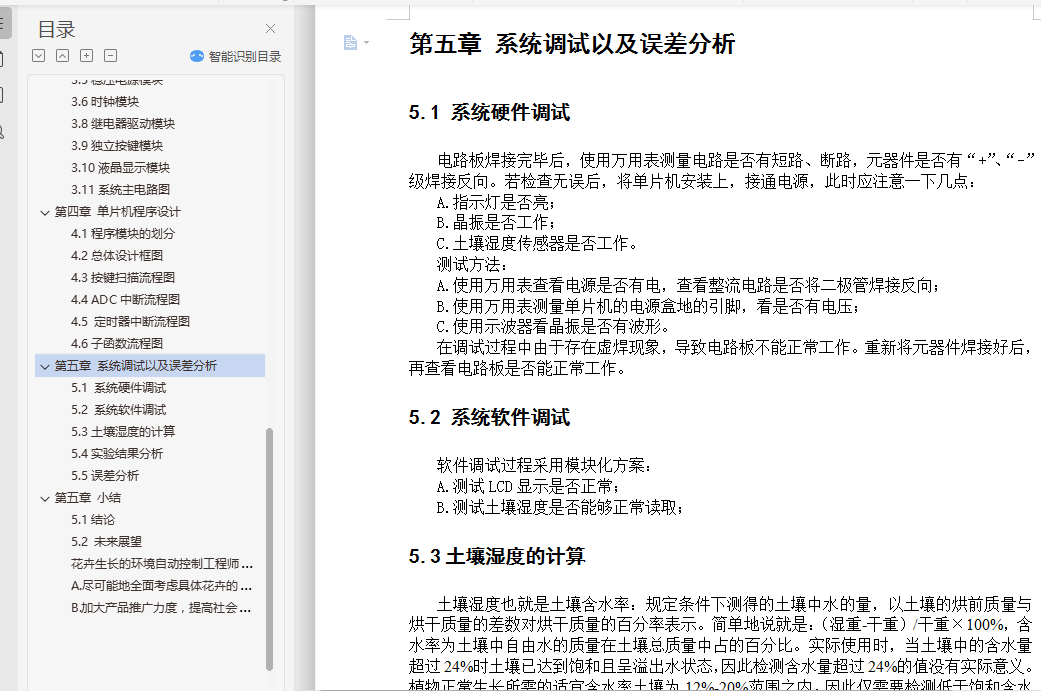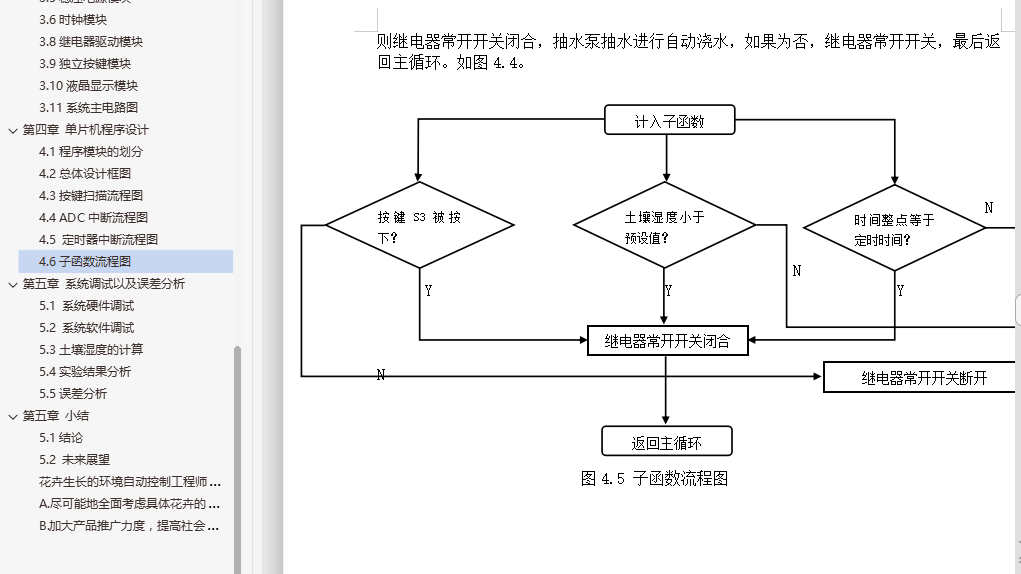摘要
很多家庭都种植有令人赏心悦目的花卉,但是当主人外出几天时,为避免这些花卉处于无人浇水的境地,所以设计一种自动浇花器十分必要的。本系统采用51单片机STC12C5A60S2作为核心控制器,用土壤湿度传感器检测土壤的湿度,并将模拟信号传送给单片机处理,单片机根据传回的信号进行处理,当检测到土壤的湿度低于一定值时,单片机控制继电器阀门,启动抽水泵对花卉进行自动浇水。当土壤湿度超过预设值时停止浇水。该系统不仅实现自动浇花功能,而且用液晶LCD12864实现对土壤湿度的实时显示,同时用DS1302始终芯片显示时间,可以定时浇水、并将浇水的时间和时长记录下来,以便主人了解花卉的生长情况。自动浇花器的实现,节省人力物力,当人们外出的时候,不至于影响花卉的生长,如果在家也可以关断浇花器,手动浇花。
关键词:单片机STC12C5A60S2、自动浇花、LCD12864、DS1302
Abstract
Many families have a pleasing flowers, but when the owner went away for a few days, in order to avoid these flowers have no watering condition, so the design of an automatic watering device is very necessary.The system uses 51 microcontroller STC12C5A60S2 as the core controller, for the detection of soil humidity sensor of humidity, and the analog signals to the SCM, SCM for processing according to the returned signal, when the soil moisture is lower than a certain value, the single chip machine control relay valve, start the pump automatic watering the flowers. When the stop watering the soil moisture exceeds a preset value. The system not only achieves automatic watering function, but also with LCD real-time LCD12864 display on soil moisture, at the same time with the DS1302 chip can always display time, regular watering, and the long record of watering time and, in order to understand the growth of flower master. Automatic watering device, save manpower, when people go out, does not affect the growth of flowers, if at home can also turn off the watering device, manual watering.
Keywords: STC12C5A60S2、automatic watering、LCD12864、DS1302
目录
第一章 前言 1
1.1 研究背景及意义 1
1.2自动浇花系统的研究现状 1
1.3自动浇花系统的发展前景 2
1.4 内容章节介绍 2
第二章 自动浇花系统的方案比较 3
2.1自动加压法 3
2.2时间、流量控制法 3
2.3基于单片机的自动浇花系统 3
2.4本文研究方法 3
第三章 系统的设计 6
3.1设计思想系统的基本框架 6
3.2主控制芯片选型 6
3.3单片机时钟电路 7
3.4单片机复位电路 8
3.5稳压电源模块 8
3.6时钟模块 9
3.8继电器驱动模块 13
3.9独立按键模块 14
3.10液晶显示模块 14
3.11系统主电路图 16
第四章 单片机程序设计 18
4.1程序模块的划分 18
4.2总体设计框图 18
4.3按键扫描流程图 19
4.4 ADC中断流程图 20
4.5 定时器中断流程图 21
4.6子函数流程图 21
第五章 系统调试以及误差分析 23
5.1 系统硬件调试 23
5.2 系统软件调试 23
5.3土壤湿度的计算 23
5.4实验结果分析 24
5.5误差分析 25
第五章 小结 26
5.1结论 26
5.2 未来展望 26
致谢 27
参考文献...........................................................28
附件..............................................................................................29
